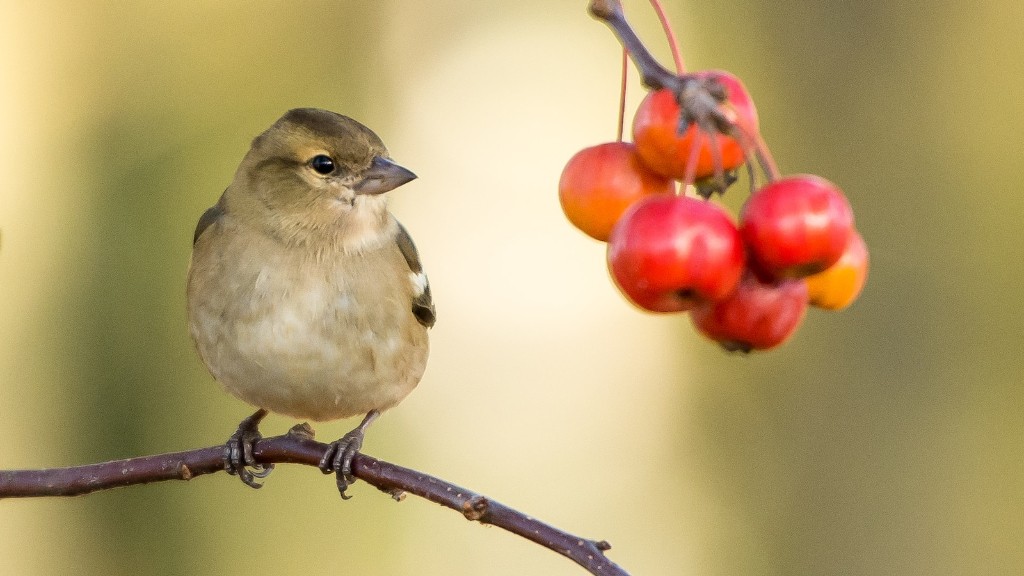Avocado tree, a fast growing evergreen tree, is one of the most popular tropical fruits that can be grown indoors. Avocado trees grow well in warm temperatures, high humidity and slightly acidic soil with good drainage. Growing an avocado tree indoors requires a bit of patience and understanding. Here are some tips on how to succeed in growing an avocado tree indoors.
The first step to growing an avocado tree indoors is to purchase seeds in a nursery. It is best to select organic seeds as they are more likely to sprout quickly. Then, properly soak the seeds overnight in lukewarm water before planting. Make sure that the seeds are fully submerged in the water until they are swollen.
After soaking, place the avocado seeds in a pot with adequate drainage holes. This is important as too much moisture can rot the roots. Cover the seed halfway with moist soil and lightly press down to ensure it is securely covered.
Next, keep the soil moist at all times. Avoid over-watering as this may cause the seed to rot and the roots of the avocado tree to drown. Place a thin plastic sheet over the pot to help retain moisture and place the pot in a spot that will receive plenty of indirect sunlight.
As the seed begins to sprout, thin out the leaves as they mature by cutting off the weaker ones. Fertilizing the tree will also help it to grow faster. Make sure to water the tree regularly and use a liquid fertilizer every month. This will help the tree to get the necessary nutrients it needs to grow strong.
It may take anywhere from 5 to 6 weeks for the avocado seed to sprout. After that, it can take anywhere from 3 to 6 months for the avocado tree to produce its first fruit. Be patient, as the tree may take up to several years to produce a sizable crop.
When the avocado tree is ready to produce fruit, it is important to make sure that the tree is well taken care of. Pruning and trimming leaves and branches will help to keep the tree healthy. An avocado tree may need to be moved or repotted every year or two in order to get the best results.
Taking proper care of an avocado tree is crucial to its growth. Make sure that the tree receives plenty of sunlight and has enough water and fertilizer. Proper pruning and trimming will ensure that the tree will remain healthy and will produce an abundant crop. With the right amount of care, a healthy avocado tree can be enjoyed indoors for many years.
Protect the Tree
Avocado trees are susceptible to pests and diseases, which can be detrimental to its growth. It is important to keep an eye out for any pest or disease attacks and take the necessary steps to prevent and control them. If a pest or disease does occur, use the proper methods to keep them away from the tree.
Placing a floating row cover on the tree is one of the best ways to protect it from pests and diseases. This helps to create an enclosure around the tree and will limit the pests’ access to the tree.
Using insecticides and fungicides is also a good way to control pests and diseases. Make sure to read the instructions carefully and use them as suggested. Also, regular pruning and cleaning of the leaves will make it difficult for pests to access the tree.
Growing an avocado tree indoors can be a fun and rewarding experience. With the proper care and attention, a healthy avocado tree can be enjoyed for many years. While it takes time and patience to successfully grow an avocado tree, the effort will be well worth the rewards that come from it.
Container Planting
Growing an avocado tree indoors requires the use of a pot that is large enough to accommodate its root system. The container should have adequate drainage holes to allow excess water to drain away. Use a soil mix that is specifically designed for container plants as it is more likely to provide the necessary nutrients for the tree.
Choose a container that is large enough to hold the growing roots of the tree and make sure that it has adequate drainage. Containers that are too large can cause the soil to become overly saturated and this can lead to root rot. If the container is too small, the tree may not be able to access enough moisture and nutrients.
The soil should be rich, loamy and well-draining. A good starting point is to use a potting soil that is specifically meant for growing container plants. Add some organic matter such as compost or manure to the soil for an extra boost of nutrients.
When choosing a pot for an avocado tree, make sure it is sturdy, deep and wide enough for the root system of the tree. Avocado trees have delicate, shallow roots and it is important that they do not become crowded or compressed in the pot. Using a larger pot will help to reduce the risk of root compaction.
Water and Fertilizer Requirements
To ensure that an avocado tree is healthy and is getting the proper amount of water, it is important to water it regularly. Aim to keep the soil evenly moist and avoid letting it dry out completely. Make sure to check the soil regularly to monitor how much moisture it is retaining.
Fertilizing the avocado tree is also an important part of caring for an indoor plant. Most soils will not have the full range of nutrients needed to keep the avocado tree healthy. Use a liquid fertilizer that is designed specifically for container plants and apply it every month.
When applying fertilizer, it is important to dilute it and follow the directions listed on the package. Too much fertilizer can cause the tree to burn and if it is not properly diluted, it can cause damage to the roots. As with any plant, it is best to use the recommended dosage and proceed with caution.
Pollination for Fruit Production
Avocado trees are self-pollinating and do not require another tree for cross-pollination. However, if the tree is not producing fruits, it may be beneficial to pollinate the flowers manually. This can be done by gently shaking the tree to help the pollen move from flower to flower. This will help to improve the chances of fruit production.
The flowers of the tree are hermaphroditic, meaning they have both male and female reproductive parts. The female parts mature first and must come into contact with the male parts to form viable fruit. If the flowers are not adequately pollinated, they will fall off without producingfruit.
To ensure that the tree produces fruit, it is important to place it in an area where it will receive plenty of airflow. Air circulation is essential for pollination and it will help to improve the chances of fruit production. If there is not enough airflow, the flowers may be unable to pollinate properly.
Harvesting and Storage
When an avocado tree is ready to be harvested, the fruits should be left on the tree until they are fully ripe. Ripe avocados will be slightly soft and will have a black or brownish hue to them. Gently twist the fruit off the stem and use them immediately or store them for later.
To store the avocados, make sure to place them in a cool, dark place. Over-ripened avocados can be placed in the refrigerator and will keep for up to two weeks. If you want to freeze them, peel and mash the avocado first before storing it in an air-tight container.
With proper care and attention, an indoor avocado tree can be a rewarding addition to any household. Growing an avocado tree requires patience and dedication, but the rewards of harvesting and enjoying the fruits of your labor are worth the effort.




